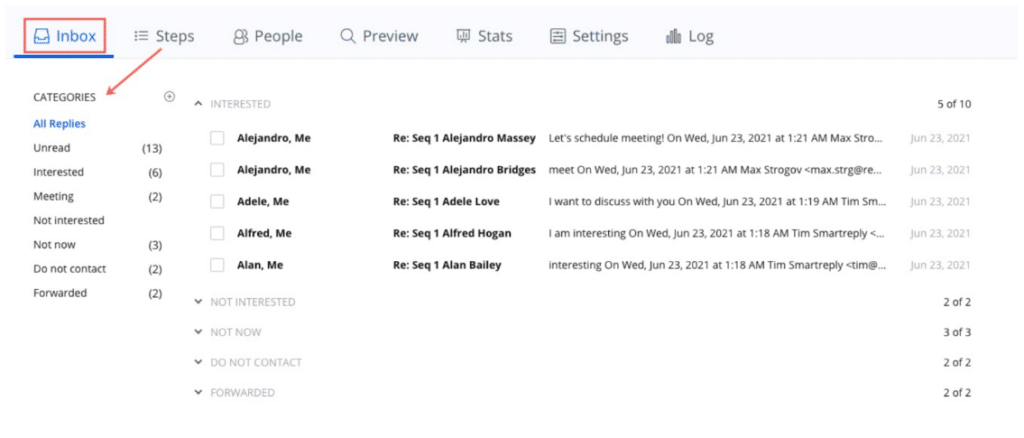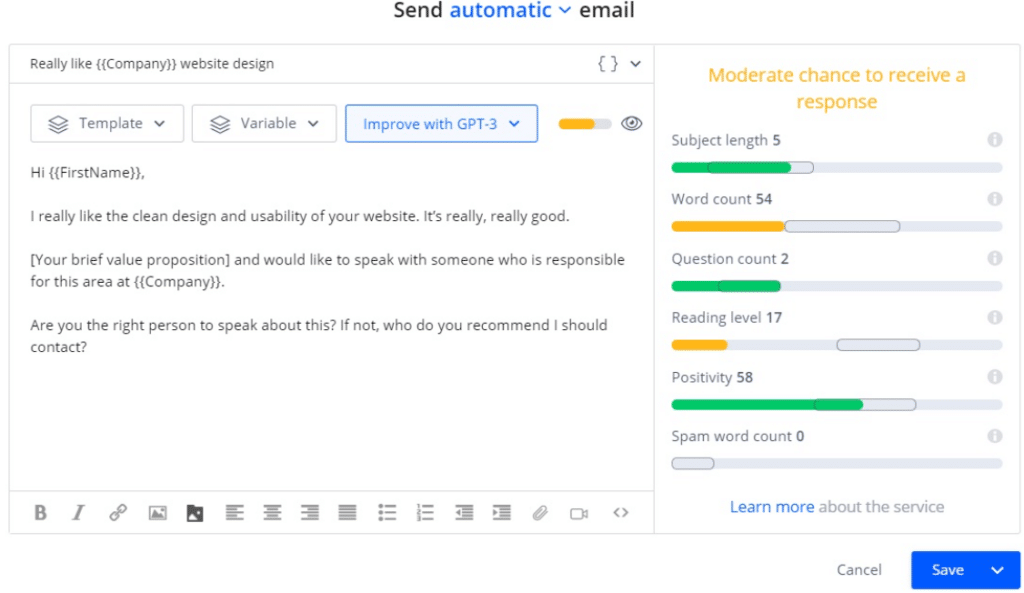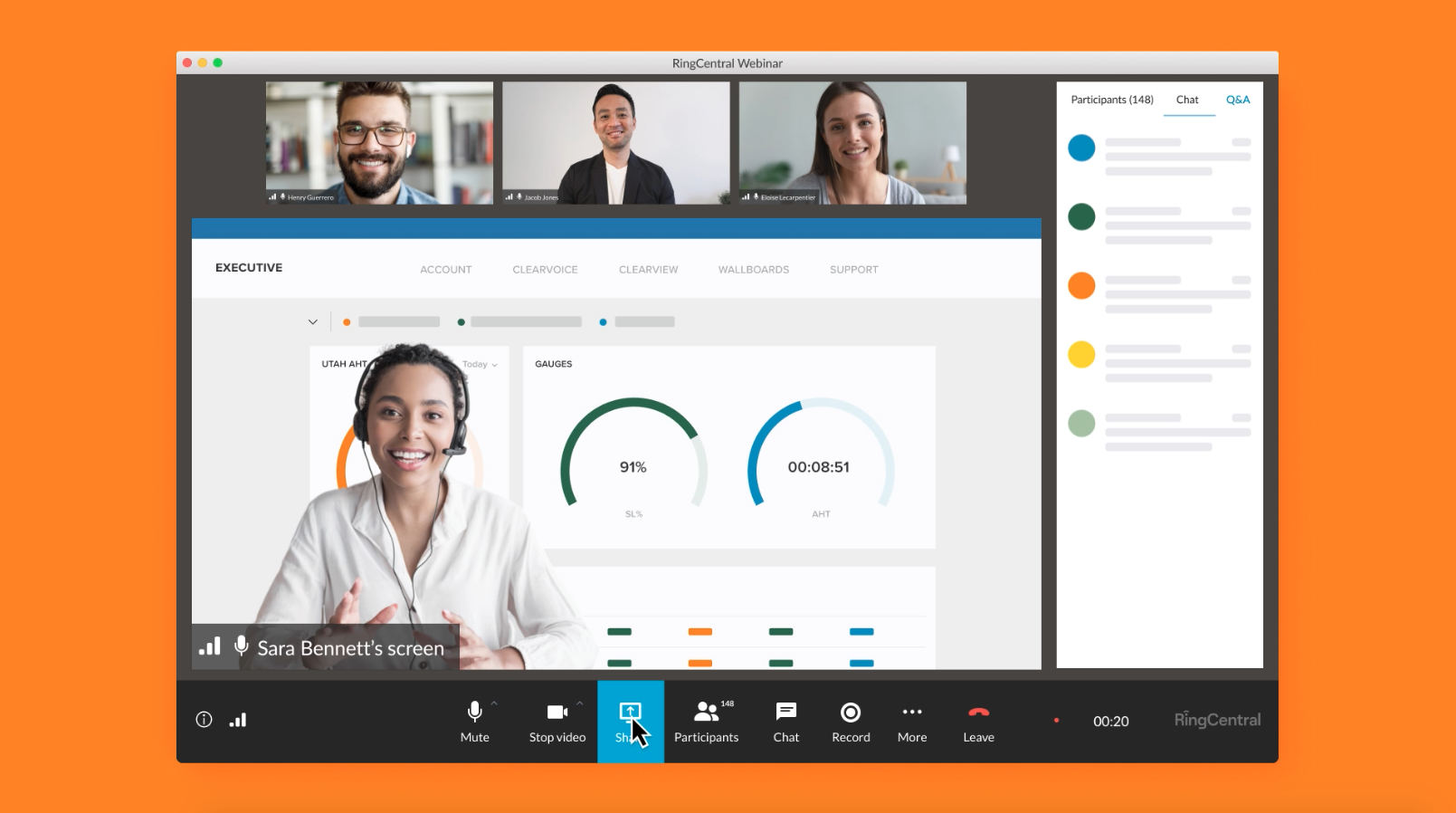The rapid rise of AI has transformed business forever, affecting every industry in one way or another. And sales is no exception. The truth is, AI has been around in sales for a while. But until just recently, it’s been merely scratching the surface while humans were still doing most of the ‘thinking.’
Nowadays, sales teams can implement AI across their entire sales cycle to simplify, automate, and enhance tasks, from prospecting to closing deals, without compromising the quality of work.
Besides, these tools also work with a ton of data to analyze customer behavior and provide businesses with concrete insights into the best course of action to perfect the buying experience. Perfect timing, I would say, given the record-high customer expectations and the intricate, unpredictable buyer journey that businesses have to deal with today.
Companies looking to stay ahead of the game need to incorporate the right AI tools in their sales processes, which, in turn, will create unprecedented efficiency, productivity, and revenue growth.
Let’s see how exactly AI is permanently changing the sales world, one use case at a time.
- Lead generation
- Lead scoring
- Sales engagement
- Personalized buyer and customer experience
- Customer service
- Upsell/cross-sell opportunities
- Forecasting / predicting analytics
7 ways AI is changing the sales industry
1. Lead generation
The starting point of all B2B sales teams is generating leads, and more importantly – finding highly-relevant prospects that fit your ideal customer profile (ICP) and are likely to be interested in your product.
Saying it’s a time-consuming task would be an understatement! Thankfully, AI can seamlessly simplify this process by creating targeted buyer personas based on the data about existing customers and their behavioral patterns. AI will then search for contacts that match those criteria and build targeted prospect lists on your behalf.
As for inbound lead generation, sales teams can leverage AI to capture intent signals on various social media platforms to identify their leads’ buyer readiness. These leads are then automatically added to the pipeline so that sales development representatives (SDRs) can focus their time on meaningful engagement with exclusively interested prospects, qualifying and moving them on to account executives (AEs) faster than ever.
But there’s more! Taking it a step further, AI can create unique lead generation campaigns for each target audience, optimizing the ads, content, and CTAs for a hyper-personalized approach to achieve the highest possible response rates.
As a result, it comes as no surprise that, according to the Harvard Business Review, sales teams that incorporated AI in their lead generation increased their number of leads by about 50%!
2. Lead qualification and scoring
SDRs spend a huge chunk of their time identifying potentially-interested leads from a pool of hundreds or thousands. Prioritize those who turn out not interested in your product at the expense of the burning-hot leads, and you’ve just wasted resources and missed out on a lot of business.
Rather than putting the same top effort into each lead in the pipeline or going with their gut, AI helps salespeople qualify leads, in other words identify the ‘hottest’ leads to target, with a high degree of accuracy.
AI will research and analyze potential customers’ key data, such as company size and revenue, main pain points and concerns, biggest purchase motivators, past interactions, and buying signals. Its intelligent algorithms will then provide a reliable score of how likely each lead is to make a purchase.
For example, those leads who browse your blog content and show no signs of needing your product or service will be scored much lower than, say, those who visited your pricing page 5+ times and showed signs of researching similar products.
A more hands-on use case here would be lead scoring in your inbox using sorting algorithm, which adds or deducts purchase-readiness points to categorize leads into interested, uninterested, and potentially interested in the future, as shown below: 
3. Sales engagement
With hundreds of leads, thousands of touchpoints, and follow-ups, how can you ensure nothing falls through the cracks and your messaging is always timely and relevant? AI sales assistants to the rescue!
B2B Conversational Sales Assistants can write tailored personalized emails and follow-ups, and respond to them in seconds, at scale, without hindering the human touch. These AI beasts can also tailor the most optimal outreach sequences for each lead, pinpointing the best channels and touchpoints to work with, and begin the outreach right away.
Prefer writing your own outreach texts? Not a problem – AI sales assistants can instead score your email copy and propose improvements based on the specific audience, tone, and CTA.

Such AI sales assistants will be able to have entire logical conversations with prospects on different topics, including answering burning questions such as “What makes your product different?”, and even booking meetings by suggesting and agreeing on a time.
4. Personalized buyer and customer experience
Generic sales approaches to all potential customers won’t cut it any longer, no matter how great your product/service is. Over 80% of buyers expect a personalized experience, saying it’s just as important as the product itself.
If you personalize their buyer journey, prospects will appreciate that you took the time to identify and anticipate their needs, which is also a great ice-breaker. It should come as no surprise by now that AI has this covered as well.
By analyzing the large datasets of existing customers, certain sales AI tools can determine the best content, value proposition, price offers, outreach channels, CTAs, and nurturing sequences (how many touchpoints, when, and how) for each of your buyer personas.
Next, it can allocate every new lead into one of those groups by learning their behavior and preferences. As a result – the most personalized buyer journey for every potential customer, which has become somewhat of a necessity for those wishing to maintain a long-term competitive advantage.
Do you ever get stunned by those social media ads of products or services you are interested in but haven’t even had the chance to research yet? That’s a prime example of AI algorithms doing their job of creating a personalized and timely buyer experience.
On this note, another cool AI sales feature is price optimization, which is a fantastic addition for businesses with custom pricing plans in place. Set the price too high – you risk losing a client, undersell – you set a dangerous precedent and risk losing money in the long run.
AI will suggest the best price for each unique customer by analyzing in-depth all the previous won and lost deals and finding the perfect balance between maximizing profits and not scaring away a customer.
5. Customer service
While this next point isn’t directly tied to the sales process, it’s undeniable that customer service teams are often closely working with sales and marketing. For instance, potential and existing customers may have questions about the product’s features, integrations, and a million other things. They can seek answers from their sales point of contact or CS, but with AI, there is a third option – chatbots.
Chatbots are another form of conversational AI that are usually placed on company websites or directly within SaaS products to interpret various inquiries. AI-powered chatbots have the capacity to provide logical, humanized answers and solutions, while constantly learning and growing their algorithms.
What they bring to the table is hard to undervalue. Chatbots now play a key role in lead nurturing with their ability to answer pretty much any question, provide helpful resources, redirect to the appropriate point of contact, and lots more.
Plus, their 24/7 availability can accommodate leads from all over the world, even while your talented sales humans are deep asleep.
AI Chatbots will eradicate relying on the general FAQs or waiting for customer agents or sales reps to reply, which fits perfectly with modern customer expectations of moving through the sales process at the speed of light. Ultimately, this will speed up the buyer journey and shorten the time to close a deal and welcome new customers onboard.
Research also shows that businesses worldwide save around $8 billion annually on business costs by implementing chatbots, which is a tempting figure for businesses looking for ways to cut down their operational costs.
6. Upsell/cross-sell opportunities
Congratulations! Your sales team is now generating new customers faster than ever, but the powerful capabilities of AI are from over.
Your existing customers are your number one priority. It’s crucial to have regular touchpoints with them to provide the best user experience and ensure they feel valued, without asking for anything in return. This way, your profits will grow in the long run much more than placing your entire focus on attracting new customers.
For reference, a recent Hubspot survey found that 72% of sales professionals who upsell and 74% who cross-sell grew their revenue by up to 30%. Besides, it’s much easier to ‘sell’ to those already in business with you and trust your brand than to win over unknown prospects.
Sales AI tackles this issue like a champ by constantly analyzing customer and product usage data to stay on top of any cross-sell or upsell opportunities, identifying the most relevant customers to target, along with which products and discounts to offer, and when.
- A common example of AI-induced upselling for SaaS companies could be setting your tool on the lookout for signs of client companies growing, and alerting sales reps of this opportunity to discuss upgrading to a bigger plan.
- Similarly, when we get triggers indicating our client companies are scaling their email campaigns, our SDRs know this is a golden opportunity to discuss whether they would be interested in our partner product – an email warm-up tool, which would be of great benefit to their growing email outreach.
7. Forecasting / predicting analytics
Forecasting refers to identifying any ‘macro’ events such as future trends and shifts in customer behavior. It is crucial for all sales leaders and businesses in general as it allows them to better plan and navigate their operations in accordance with external factors.
Forbes concluded that over 70% of top-performing B2B companies indulge in sales forecasting at least once a week, and I’m sure that is no coincidence.
Predictive analytics takes on a different role. This form of AI mines and analyzes huge amounts of historical and present data, and leverages machine learning algorithms to make intelligent future predictions. In our case – it predicts future sales, revenue, customer retainment, churn, etc.
In return, sales teams get an accurate report of exactly what to expect from the next quarter, allowing them to set realistic quotas and goals for the months ahead.
The problem with predicting sales is that it’s an extremely complex task involving big chunks of data, making sales leaders partially rely on their personal predictions. Well, that’s how it used to be, but not anymore.
Paired with scenario forecasting (where sales reps can create ‘what if’ scenarios), it becomes obscenely easy to get a streamlined view of what variables in their sales operations can be adjusted or improved for maximum results.
But hold on, that’s not all!
Sales heads can also use predictive AI analytics to visualize their team’s expected performance, allowing them to see which reps will hit their quotas and what needs to be addressed to ensure everyone is on top of their game.
AI in sales – disruptive force or blessing in disguise?
While many critics believe that AI will be detrimental to the sales industry by replacing humans, I believe that couldn’t be further from the truth. Motivated humans and intelligent tech paired together will create the most efficient workers ever seen, both complementing each other.
As Mark Hunter put it in our recent expert roundup interview of some of the top industry leaders:
“In the end, AI will allow the top-performing salesperson to become even more of a top performer.
Conversely, the salesperson who isn’t bringing any value via insights to their customers will soon be out of a job, but the only thing AI will do is accelerate the process.”
What’s more, AI is a game-changer for sales for several reasons:
- Increased sales → as discussed, AI tools eliminate numerous time-consuming tasks, boosting sales reps’ efficiency by freeing up their time to focus on closing deals. 74% of sales and marketing professionals say that AI adoption increases revenue and 83% that it decreases costs.
- Job satisfaction and performance → 82% of enterprise employees believe AI increases their job satisfaction and performance. Makes total sense, because, as a rule of thumb – complex, repetitive tasks are no fun.
- Staying ahead of competition → as of 2020, only 37% of sales organizations incorporated AI in their processes, but those who have – showed very promising results. The window is still open to leverage AI before your competitors inevitably do so as well.
- Increased CLV → AI creates more precise targeting, smarter lead and customer engagement, personalized customer journeys, and stays proactive on any potential churn, all resulting in happier, long-term customers.
The future of AI in sales
Sales will never be the same – AI is here to stay. Companies looking to adapt to the new reality should gear up with the right tools, embrace AI and use it to their advantage. If you’re not doing more than everyone else does — you’re doomed to stay where you are.
AI sales tools are like additional team members that work non-stop, without breaks or sleep. They automate complex tasks in seconds, engage with customers in a meaningful, humanized manner, enhance the overall customer experience, help you make smarter decisions, and increase the productivity and efficiency of your sales team. What’s there not to like?
What’s fascinating is that AI capabilities are near limitless, constantly learning the business it works for and improving itself, so we have yet to see its true full potential.
Everywhere you look – AI is there, in healthcare, hospitality, and inside your phones. I don’t know about you, but I’m excited to see what the future of AI has in store for us, both in sales and the world in general. So let’s buckle up and enjoy the ride!
Originally published Nov 09, 2022, updated Nov 03, 2023






